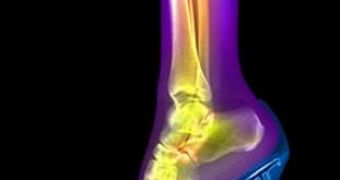What is electromagnetically induced transparency? It's a coherent optical nonlinearity which renders a medium transparent over a narrow spectral range within an absorption line. Extreme dispersion is also created within this transparency "window" which leads to "slow light."
Now, a team of scientists, made up of Christian Buth, Robin Santra and Linda Young at Argonne National Lab, discovered a new method of achieving this electromagnetically induced transparency (EIT), for x-rays.
Usually, for a gas to absorb light at a certain frequency, the energy needed to bridge the gap between two internal quantum levels in the atoms in the gas must correspond to that frequency. This is quite hard to achieve, so the scientists came up with an idea.
They thought that it could be possible to initiate the quantum phenomenon called electromagnetically induced transparency if a third quantum level existed. To create this level, they used a laser beam, called pump beam, to create a coherent superposition of levels 2 and 3, which become so-called "dressed states."
The transition pathways from level 1 to the two dressed states can be properly tuned to interfere in a destructive manner and to suppress the absorption of a probe beam over just a narrow range of frequencies, corresponding to the transition from level 1 to level 2.
The result is a selective transparency that produces a rapid variation of the refraction index near the frequency, a phenomenon which can be exploited in slowing optical light pulses.
However, so far it has been very difficult to achieve all of these processes in laboratory applications, since the energy levels are broad, corresponding to very short-lived vacancies in inner electron shells lodged in somewhat heavy atoms; in neon atoms, for example, the lifetime is about 2 femtoseconds.
Now, the team was able to calculate the power of the pump beam required to achieve the x-ray transparency, (10^12 W/cm^2), a level that will not necessarily undo the fragile trio of states needed for EIT to work.
Applications of the new discovery could be used to shape the x-ray pulses used in x-ray laser facilities where scientists work on biomolecule imaging and molecular movies.

 14 DAY TRIAL //
14 DAY TRIAL //